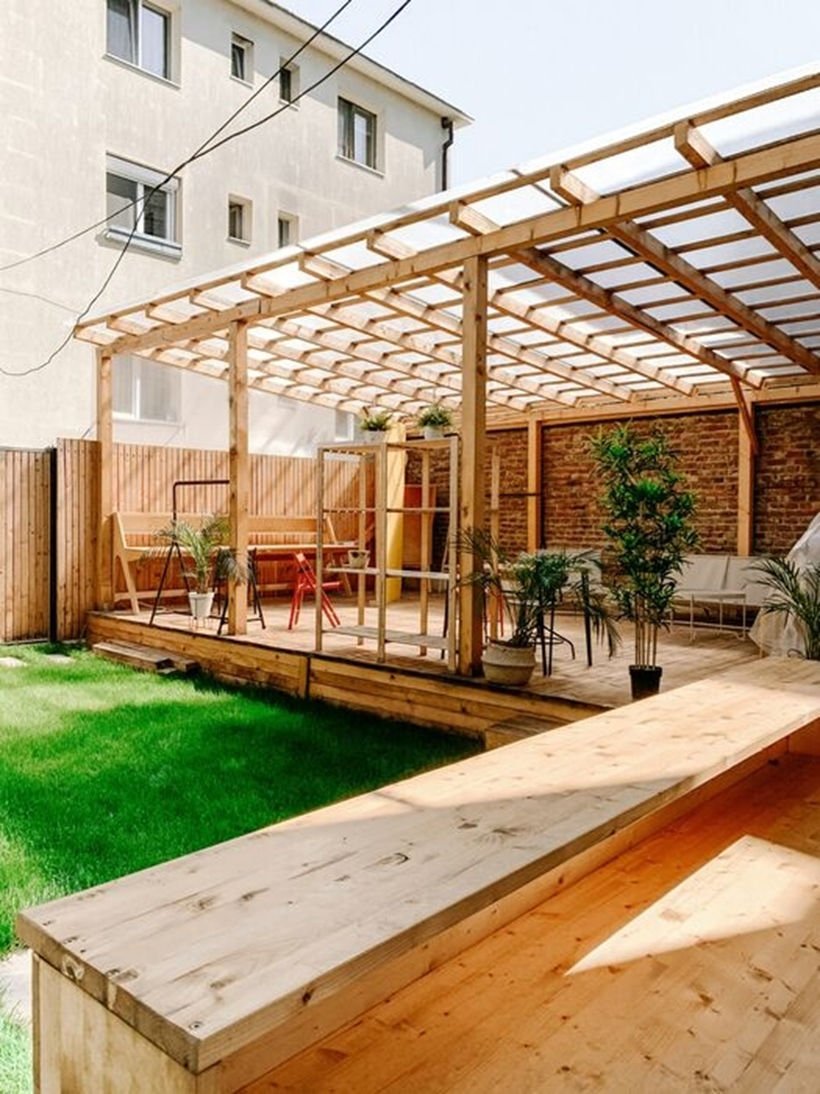Hard Landscaping vs. Soft Landscaping: What’s Best for Your Garden?
- Christie's Carpentry & Construction

- Jul 16
- 4 min read
When it comes to designing or renovating your garden, one of the most important decisions you’ll face is choosing between hard landscaping and soft landscaping. While both play vital roles in creating functional and beautiful outdoor spaces, they serve different purposes and offer unique advantages. In this article, we’ll explore the key differences between hard and soft landscaping, weigh the pros and cons of each, and offer real-life examples to help you decide which is the best approach for your project - whether it's part of a larger home renovation, or a fresh home design vision.
What is Hard Landscaping?
Hard landscaping refers to the solid, non-living elements of a garden design. These are the built structures that shape the layout and determine how people move through and use the space. These components typically include construction and durable materials such as stone, concrete, brick and timber. Many building contractors and construction companies use hard landscaping to give outdoor spaces long-lasting structure and definition. Some common examples of hard landscaping include:
● Patios, decking and paved areas
● Paths and driveways
● Retaining walls and raised beds
● Fences, gates and boundary structures
Whether you’re building a new seating area, installing a path through the garden, or adding a retaining wall to manage elevation, hard landscaping is what allows you to define zones, manage drainage, and create surfaces that can be used year-round.

What is Soft Landscaping?
Soft landscaping includes the living, growing aspects of your garden. It's what brings colour, texture, movement and seasonal variation to the space. Unlike the fixed nature of hard landscaping, soft landscaping is more adaptable and can evolve over time as plants grow or tastes change.
Soft landscaping can include:
● Lawns and turf
● Flower beds and borders
● Trees, shrubs, and hedges
● Climbing plants and ground covers
● Container gardens and seasonal planting schemes
These elements not only enhance the visual appeal of your garden, but also support biodiversity, improve air quality, and contribute to a sense of well-being.
The Pros and Cons of Hard Landscaping
One of the biggest advantages of hard landscaping is its longevity. Materials like stone, concrete, and treated timber are built to last and require very little maintenance. A well-laid patio or driveway can remain functional and attractive for decades with minimal effort. These features also enhance usability, making it possible to enjoy your garden in all weather conditions. Structured zones like terraces or paths offer convenience and help make the most of your available space.
However, this durability comes with a cost—literally. Installing hard landscaping often involves specialist materials and the expertise of building contractors, which can make it more expensive than soft landscaping. It also lacks flexibility; once installed, changes can be difficult and expensive to implement. And while hard materials provide structure, too much of them can make a garden feel stark or uninviting if not balanced with greenery.
The Pros and Cons of Soft Landscaping
Soft landscaping excels at bringing vibrancy and sense of nature into your garden. Plants soften the appearance of a space, create a soothing atmosphere, and offer endless opportunities for seasonal change. Whether it's a bed of spring tulips, or a summer border filled with perennials, soft landscaping brings a garden to life. It also offers ecological benefits by improving air quality, reducing heat, and providing habitats for wildlife.
Which Approach is Best For Your Garden?
The best landscaping approach depends on your goals, budget, and how much time you’re willing to commit to a garden maintenance.
If your priority is functionality and ease of maintenance, hard landscaping may take the lead. A paved patio for entertaining, a clean driveway, or terracing for a sloped garden can add immediate, practical value. On the other hand, if you’re looking to create a tranquil retreat filled with colour and life, or if you enjoy gardening as a hobby, then soft landscaping could be the right choice. That said, it doesn't have to be an either/or decision. In fact, the most successful garden typically does include both.
The Best of Both Worlds
In most successful garden designs, hard and soft landscaping are used together to complement each other. Hard landscaping creates the framework—paths, terraces, steps—while soft landscaping weaves around it to add life and softness. For example, a stone patio becomes far more inviting when it's surrounded by lush planting beds, and a timber pergola feels more integrated into a garden when it’s draped with climbing roses or wisteria.
Many of the gardens featured on our website are excellent examples of this balance. You’ll find gardens where we’ve blended raised timber beds (hard landscaping) with perennial-rich planting schemes (soft landscaping), creating gardens that are practical, beautiful, and easy to maintain.
Whether you need a functional, paved entertainment space, or a retreat filled with greenery, thoughtful landscaping can transform any outdoor area into something special. Understanding the difference between hard and soft landscaping means you can make informed decisions that suit your lifestyle, aesthetic preferences, and long-term garden goals.
Need help designing your garden? Explore our portfolio, or get in touch with our expert team for a bespoke consultation tailored to your space and vision.





I found the tips in this post really helpful, especially for homeowners planning upgrades. For professional kitchen renovation Toronto, Vulcan Hats Construction provides reliable services with great attention to detail.